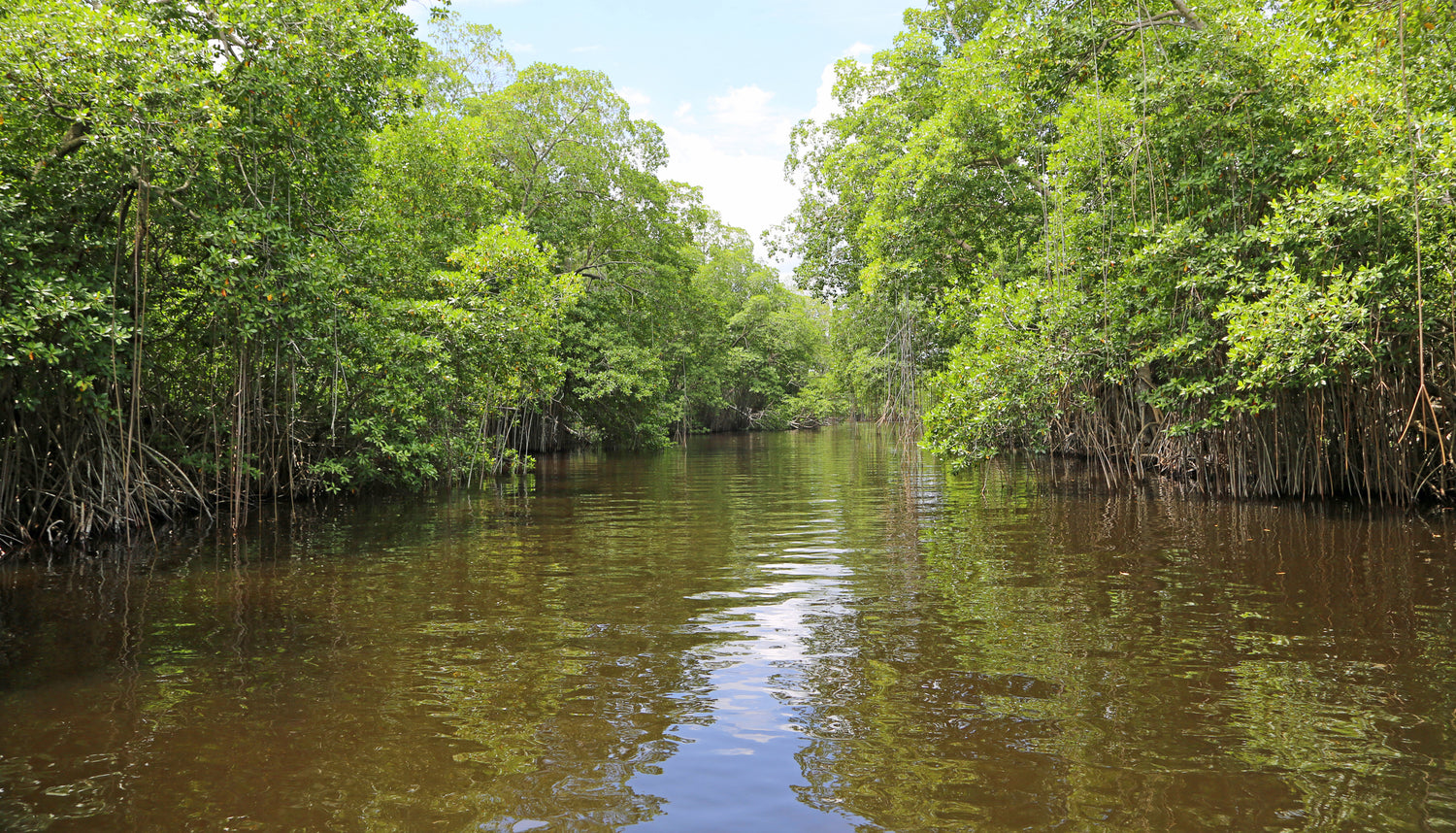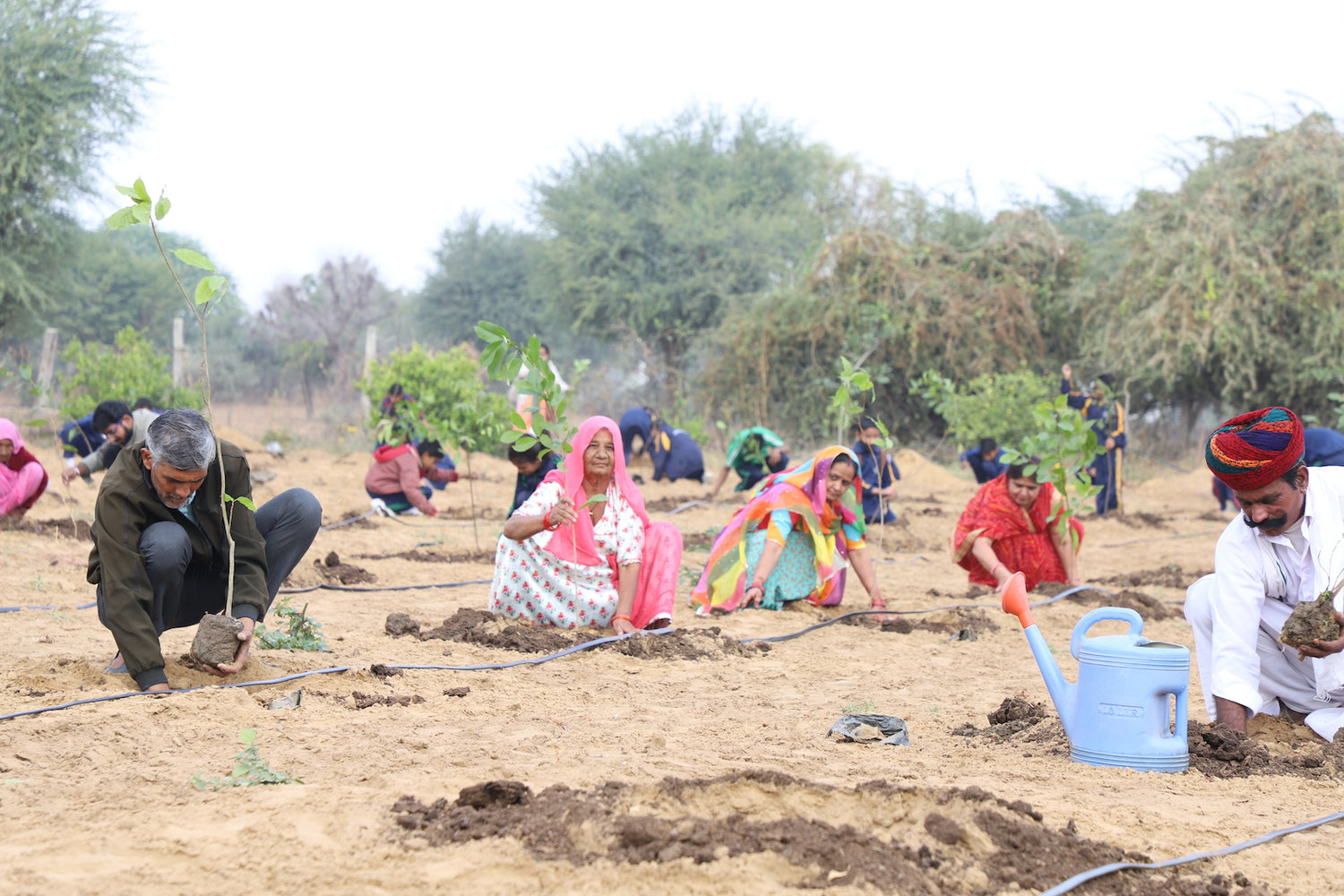Mangroves in Bhubaneswar: Bhitarkanika’s Urban Connection
Bhubaneswar, the capital of Odisha, is often celebrated for its temples and urban development. However, its proximity to Bhitarkanika, India’s second- Read more
Connect with us
-
👥 Corporates
If you are looking for:
- 🌲 Tree Plantation Events
- 📊 CSR Projects
📧 corporate@growbilliontrees.com
📞 +91 9699723523
💬 +91 9325931304 WhatsApp (Only)
🕒 Mon - Sat | 10am - 7pm IST
-
🧩 Tree Plantation NGOs
If you are looking for:
- 💰 Financial Assistance
- 🤝 Operational Support
📧 support@growbilliontrees.com
📞 +91 9699723523
💬 +91 9325931304 WhatsApp (Only)
🕒 Mon - Sat | 10am - 7pm IST
-
🌼 Individuals
If you are looking for:
- 👥 Group Tree Plantation Drive
- 🌳 Bulk Tree Plantation
📞 +91 9699723523
💬 +91 9325931304 WhatsApp (Only)
🕒 Mon - Sat | 10am - 7pm IST
Trending
Trees for Corporates
Mangroves in Bhubaneswar: Bhitarkanika’s Urban Connection
Bhubaneswar, the capital of Odisha, is often celebrated for its temples and urban development. However, its proximity to Bhitarkanika, India’s second-largest mangrove forest, adds an intriguing ecological dimension to the city.
Although Bhubaneswar itself lacks dense mangrove cover, its connection to Bhitarkanika National Park through the interconnected waterways of the Mahanadi Delta highlights its role as a gateway to one of India’s most biodiverse ecosystems.
Historical and Cultural Significance
The Bhitarkanika mangroves have long supported local communities with their abundant resources.
Historical records suggest that mangroves in this region played a significant role in trade and navigation during ancient and medieval times. Fishermen, honey collectors, and indigenous tribes have coexisted with these ecosystems for centuries.
The mangroves were first documented as critical ecological assets during the British era and were later designated as Bhitarkanika Wildlife Sanctuary in 1975, gaining the status of a Ramsar Wetland in 2002.
Ecological Importance
1. Cyclone and Flood Mitigation
Bhubaneswar, located just 100 kilometers from the coast, often experiences the impact of cyclones. Mangroves in Bhitarkanika absorb tidal surges and reduce the intensity of cyclonic winds, providing indirect protection to the city and its surroundings.
2. Biodiversity Hotspot
The Bhitarkanika mangroves host a dazzling array of species, including the saltwater crocodile, king cobra, and over 300 bird species, such as the black-necked stork and Asian openbill.
These mangroves are also home to endangered flora, such as the Sundari tree (Heritiera fomes), which lends its name to the Sundarbans.
3. Carbon Sequestration
Mangroves store up to four times more carbon than tropical rainforests, making them essential in combating climate change. Bhitarkanika’s dense mangrove forests play a significant role in offsetting carbon emissions for nearby urban areas like Bhubaneswar.
4. Livelihood Support
For nearby communities, mangroves are lifelines, providing fish, crabs, and honey. Sustainable harvesting of these resources ensures economic stability while preserving the ecosystem.
Fun Facts About Bhitarkanika Mangroves
- Crocodile Capital: Bhitarkanika is home to India’s largest population of saltwater crocodiles, with some growing over 20 feet long.
- Avian Haven: During winter, thousands of migratory birds, including bar-headed geese and Brahminy ducks, flock to Bhitarkanika’s mangroves.
- World’s Tallest Mangrove Tree: A mangrove tree in Bhitarkanika was recorded at an astonishing height of 63 feet, the tallest of its kind globally.
Environmental Challenges
-
Deforestation and Encroachment Illegal logging for timber and agricultural expansion threatens the mangroves, reducing their ability to act as natural barriers.
-
Pollution Industrial waste and untreated sewage from nearby urban areas, including Bhubaneswar, degrade water quality, affecting aquatic life in the mangroves.
-
Rising Sea Levels Climate change poses a long-term threat to Bhitarkanika’s mangroves, with increasing salinity and submergence of coastal areas impacting biodiversity.
-
Cyclonic Activity Frequent cyclones, exacerbated by global warming, challenge the resilience of these ecosystems.
Grow Billion Trees: Bridging Bhubaneswar and Bhitarkanika
Grow Billion Trees is actively involved in conserving and restoring Bhitarkanika’s mangroves, emphasizing their importance for nearby urban centers like Bhubaneswar.
By combining cutting-edge technology, community participation, and sustainable practices, the organization ensures the long-term health of these ecosystems.
Collaborations
- Partnering with Odisha’s Forest Department and local NGOs to execute large-scale mangrove restoration projects.
- Collaborating with research institutions to study mangrove biodiversity and its connection to urban resilience.
Execution Strategies
- Establishing nurseries for salt-tolerant mangrove species like Avicennia marina and Rhizophora mucronata.
- Conducting plantation drives in degraded areas of Bhitarkanika and nearby riverbanks.
- Utilizing drone technology and satellite imagery to monitor mangrove growth and track restoration progress.
Awareness and Advocacy
- Hosting workshops in Bhubaneswar schools and communities to educate residents about the ecological importance of mangroves.
- Promoting eco-tourism activities like guided boat tours and bird-watching expeditions in Bhitarkanika.
- Running social media campaigns to highlight how Bhitarkanika’s mangroves indirectly protect urban areas like Bhubaneswar.
Key Achievements by Grow Billion Trees
- Post-Cyclone Restoration: After Cyclone Fani (2019), Grow Billion Trees restored over 200 hectares of mangroves, creating a resilient coastal barrier.
- Community-Based Conservation: Fisherfolk and women’s self-help groups have been trained to cultivate mangrove saplings, providing both ecological and economic benefits.
- Eco-Tourism Development: Initiatives like mangrove walks and crocodile safaris have increased awareness and generated funds for conservation.
Future Prospects
By 2030, Bhitarkanika’s mangroves could serve as a global model for integrating urban and ecological resilience.
Increased mangrove coverage will enhance Bhubaneswar’s ability to withstand climate impacts while supporting biodiversity and livelihoods in the region.
Conclusion
The mangroves of Bhitarkanika, though not directly within Bhubaneswar, form an essential ecological connection to the city.
They protect against natural disasters, combat climate change, and support biodiversity, proving their value as natural shields for urban and rural communities alike.
Grow Billion Trees is leading efforts to restore and expand these vital ecosystems through innovative strategies and community collaboration.
With continued conservation and public awareness, Bhubaneswar and Bhitarkanika can remain intertwined as a testament to the harmony between urban development and ecological preservation.
Bhitarkanika Mangroves
These mangroves are nature’s ultimate protectors, hosting saltwater crocodiles, vibrant bird species, and ancient Sundari trees, all while shielding Bhubaneswar from cyclones and tidal waves.
Mangroves as Cyclone Barriers
During storms like Cyclone Fani, Bhitarkanika’s mangroves acted as green shields, reducing damage and reminding Bhubaneswar why nature’s defenses are irreplaceable.
Biodiversity in Bhitarkanika Mangroves
Home to king cobras, black-necked storks, and mudskippers, these mangroves are bustling ecosystems showcasing nature’s finest.
Mangroves and Carbon Sequestration
Bhitarkanika’s mangroves store immense amounts of carbon, helping Bhubaneswar combat climate change while quietly working to clean the air.
Threats to Bhitarkanika Mangroves
Urban sprawl, pollution, and rising sea levels are endangering these vital ecosystems, making conservation efforts critical for Bhubaneswar’s future.
Grow Billion Trees in Bhitarkanika
This initiative restores degraded mangroves, partners with local communities, and leverages technology to ensure these ecosystems thrive.
Mangroves and Eco-Tourism
With crocodile safaris and serene boat rides, Bhitarkanika offers eco-tourists an adventure while raising awareness about mangrove conservation.
Mangroves and Fisheries in Odisha
Acting as nurseries for fish and crabs, these mangroves directly sustain coastal communities and provide resources for Bhubaneswar’s markets.
Mangroves and Urban Flood Defense
Bhitarkanika’s mangroves absorb storm surges and reduce flooding risks, proving their indirect yet vital role in protecting Bhubaneswar.
Sundari Trees in Bhitarkanika
These iconic mangroves, known for their salt tolerance and strong wood, are a cornerstone of the ecosystem’s resilience and history.
Mangroves and Migratory Birds
Bhitarkanika’s mangroves welcome thousands of migratory birds annually, turning the area into a paradise for bird-watchers and biodiversity enthusiasts.
Community Role in Mangrove Conservation
Local communities in Bhitarkanika play a crucial role in preserving these ecosystems, partnering with Grow Billion Trees for sustainable conservation practices.
You may like
Corporate Plantations
FAQ
What are the mangroves near Bhubaneswar?
These mangroves, part of Bhitarkanika National Park, are natural shields against cyclones, biodiversity hotspots, and carbon storage champions. Grow Billion Trees actively restores and protects these ecosystems.
Why are Bhitarkanika’s mangroves important?
They mitigate floods, combat climate change, and support diverse wildlife while indirectly protecting Bhubaneswar from natural disasters. Grow Billion Trees ensures these benefits continue through conservation efforts.
How do mangroves protect against cyclones?
Mangroves absorb tidal surges and reduce cyclone impact, acting as nature’s frontline defense. Grow Billion Trees enhances this protection with large-scale mangrove restoration projects.
What wildlife thrives in Bhitarkanika’s mangroves?
From saltwater crocodiles to king cobras and migratory birds, these mangroves are teeming with life. Grow Billion Trees works to preserve these habitats for biodiversity.
How do mangroves support local livelihoods?
Fishing, honey collection, and crab harvesting depend on healthy mangroves. Grow Billion Trees restores these ecosystems to sustain both nature and communities.
What threats do Bhitarkanika’s mangroves face?
Urbanization, pollution, and rising sea levels threaten these ecosystems. Grow Billion Trees addresses these challenges with reforestation and community-driven conservation initiatives.
What is Grow Billion Trees doing for Bhitarkanika’s mangroves?
We plant mangroves, engage local communities, and monitor ecosystems using advanced technology, ensuring long-term health and sustainability.
How do mangroves combat climate change in Bhitarkanika?
They store immense amounts of carbon and buffer rising sea levels, making them climate warriors. Grow Billion Trees scales up restoration to maximize these benefits.
Why are Sundari trees significant in Bhitarkanika?
Sundari trees are iconic mangroves known for their salt tolerance and ecological importance. Grow Billion Trees ensures their regeneration in degraded mangrove areas.
How do mangroves benefit eco-tourism near Bhubaneswar?
Activities like crocodile safaris and bird-watching tours attract eco-tourists while raising awareness about conservation. Grow Billion Trees promotes sustainable tourism in these areas.
What makes Bhitarkanika’s mangroves unique?
Hosting India’s largest saltwater crocodile population and towering Sundari trees, these mangroves are biodiversity hubs. Grow Billion Trees ensures their preservation through focused conservation efforts.
Can communities help conserve Bhitarkanika’s mangroves?
Absolutely! Local communities are key to protecting these ecosystems. Grow Billion Trees empowers them with resources and training to lead sustainable conservation practices.























